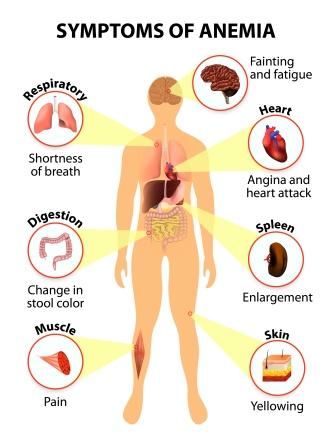Madhava Nidana Chapter 8 Panduroga Kamala, Kumbhakamala, Halimaka Nidanam
This article explains Madava nidaana 8th chapter “Panduroga Kamala Kumbhakamala Halimaka Nidanam”. Causes, pathology and symptoms of Kamala Kumbhakamala and Halimaka are explained in this chapter.
Read – Acharya Madhavakara: His Work ‘Madhava Nidana’, Legacy, Amazing Facts
Table of Contents
Pandu Roga Types

Pānduroga (anaemia, disease characterized by pallor) is of five kinds – one each from (each dosa) vāta, pitta, kapha; fourth from the combination of all three doshas and fifth from eating mud.(1)
Panduroga Nidana
Nidana – etiological factors
Over-exertion or strenuous physical exercises, sour and salty foods, alcoholic drinks, eating mud, sleeping during daytime, use of very irritating / strong / pungent substances (spices, etc.,) are the causative factors of Panduroga.
In persons who are excessively indulged in the above said causative factors, the dosas get excessively aggravated and produce whitish yellow discolouration of the skin by vitiating the rakta. This disease is called panduroga. (2)
Read – Charaka Pandu Roga Chikitsa – 16th Chapter
Pandu Purvarupa
Premonitory symptoms of Panduroga – cracking of the skin, expectoration, debility, desire for eating earth (mud), oedema of the eye sockets (around the eyes), yellow discolouration of faeces and urine and indigestion. (3)
Vataja Pandu Symptoms
Symptoms of vataja pāņdu (pandu disease caused by predominant vitiation of vata) are dryness, blackish-red discolouration of the skin, urine, eyes, etc., pricking / throbbing pain (of the body), tremors, enlargement of abdomen, giddiness, etc. (4)
Pittaja Pandu Symptoms
Symptoms of pittaja pāndu (pandu disease caused by predominant vitiation of pitta) – are yellowish discolouration of urine, faeces, eyes; burning sensation, thirst, fever and deep yellow discoloration of the body and watery faeces (diarrhoea). (5)
Kaphaja Pandu Symptoms
Symptoms of kaphaja pandu (pandu disease caused by predominant vitiation of kapha) – are watery discharges (from mouth, nose, eyes etc.), oedema, drowsiness, lack of enthusiasm, excessive heaviness of the body and white discolouration of the skin, urine, eyes and face.(6)
Tridoshaja Pandu Symptoms
Symptoms of Tridosaja Pandu (pandu disease caused by predominant vitiation of kapha) – are fever, loss of taste (appetite), nausea, vomiting, thirst, tiredness / weakness. The person having the above-mentioned symptoms along with emaciation and loss of perception in the sense organs shall be considered as unfit for treatment and shall be refused treatment because this condition is incurable. (7)
Read – Pandu Roga: Causes, Pathophysiology, Symptoms, Treatment
Mrid Bhakshana Janya Pandu
The doshas get increased in persons who have the habit of eating mud. Astringent mud increases vāta. Salty mud increases pitta. Sweet mud increases kapha.
The mud contaminates and vitiates the rasa and other tissues of the body. The mud is dry in nature and by its extreme dryness causes dryness of the food also. Mud doesn’t get digested in the body (gut). Being dry and indigestible, the mud fills up the passages of the body (mainly that of rasa dhatu) and blocks them. This leads to debility of sense organs, loss of physical strength, lustre (complexion), potency and ojas. They quickly cause pänduroga which brings about destruction of strength, normal colour and digestive fire. Since this condition is caused by eating mud, it is called mrd bhakshana janya pandu roga. (8-10)
Mrd bhakshana janya pandu lakshanas – Symptoms of pandu roga caused due to eating of mud
Such persons have oedema of the eye sockets, cheek bones, brows, feet (legs), umbilicus and genital organs; parasites develop inside their alimentary tract, eliminate watery faeces mixed with blood and mucus. (11)
Read – Ayurvedic Treatment For Worm Infestation
Sanskrit Versus

Signs of incurability
Pandu Roga Asadhya Lakshanas – Signs of incurability of Pandu Roga
Pandu roga is incurable if it is of long duration (has become chronic), and has existed for long enough to get deep seated.
It is also incurable in those people who have oedema for a long time (long standing), who sees all objects yellow (everything he sees appears yellow in colour), in those having constipation or less stools or diarrhea with green coloured faeces mixed with mucus, who are very weak, whose body is very white / pale (due to loss of blood) i.e., the body appears as if coated in white, have vomiting, fainting and thirst. The person whose body becomes white due to excessive loss of blood will not survive.
Persons whose teeth, nails, eyes have become pale (yellowish white) and who sees everything around him as being pale (yellowish white) are going to die of panduroga.
Patients (of pandu roga) who have oedema of the extremities i.e. the limbs and head are swollen but the middle part of the body (trunk) is emaciated or patients who have swelling of the trunk while the limbs and head are not swollen should be considered as incurable.
Those who have swelling of rectum, penis and scrotum, who faint often and have loss of consciousness, who are having diarrhoea and fever are also to be refused treatment (because these conditions will be incurable). (12-15)
Read – How To Make Prognosis Of Disease According To Ayurveda?
Kamala Roga
Nidana, Samprapti
Nidana, Samprapti of Kamala Roga – Etiological factors and pathogenesis of Jaundice
In such patients of pandu roga, who indulge in foods and habits which increase pitta, the pitta would get abnormally increased. This pitta on getting increased burns up the rakta (blood) and mamsa (muscle tissue) and produces the disease known as kamala. (16)

Symptoms of Kamala, Kumba Kamala
Symptoms of Kamala, Manifestation of Kumbha-kamala
The symptoms of kamala (jaundice) include – deep turmeric (yellow) colouration of the eyes, skin, nails and face, reddish-yellow faeces and urine, skin colour resembling that of frog (greenish, brown, or brownish yellow), weakness of sense organs, burning sensation, indigestion, weakness, debility, anorexia are the symptoms of kamala (jaundice). It involves both the kostha (alimentary tract) and also the shaka (rakta – blood and other tissues). If left untreated kamala makes the organs rough (dry) / hard and turns into a difficult disease called kumbha-kamala. (17-18)
Signs of incurability
Signs of incurability of Kamala and Kumbha-kamala
The patient suffering from Kamala – jaundice will die soon if he has these symptoms – blackish-yellow faeces and urine, profound oedema, bleeding in the eyes and mouth; vomitus, faeces and urine also mixed with blood; loss of consciousness (fainting), burning sensation, anorexia, thirst, constipation or blockages caused in the stomach by ama or colon by impacted faeces, stupor, delusion, loss of digestion capacity and unconsciousness with.
The patient of kumbha kamala also dies if he has vomiting, anorexia, nausea, fever, debility, dyspnoea (increased / difficult respiration), cough or diarrhoea. (19-21)
Read – Kamala Roga Chikitsa: Liver Disorder Causes, Symptoms, Treatment
Halimaka Symptoms
When the colour of the skin (or nails, eyes, urine etc) of the patient of Pandu roga turns into yellow, green or blackish yellow colour, has loss of strength and enthusiasm, stupor, poor digestion, mild fever, disinterestedness in women (sex), pain in the body, burning sensation, thirst, anorexia, giddiness – the disease is to be known as halimaka (chlorosis) which is due to increased vata and pitta. (22-23)
Symptoms of Panaki
(Fever, diarrhoea, yellow colouration both externally and internally and pale eyes – these are the symptoms of the disease called ‘Panaki’.)
Thus ends the chapter on Panduroga, Kamala, etc.
Thus ends the chapter on Panduroga Kamala Kumbhakamala Halimaka Nidanam in Madhava Nidana text written by Acharya Madhavakara.











